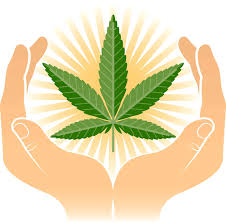
Being insane is one thing, and it is usually very difficult. Not seeing reality clearly comes with pain. Avoiding the difficulty that comes with insanity is primarily a question of avoiding the patterns of thought and behaviour that can lead to things getting out of control. This second-order sanity can be described as metasanity.
For example, you can be insane, but you can also be sane about being insane, which would be metasanity. Being metasane might involve taking advice about not smoking methamphetamine when someone points out that doing so has a deletorious effect on your mental health.
It might also involve, like the Carrie Fisher quote above, maintaining a realistic and objective view of one’s own condition.
A revealing thought experiment is to consider how a person reacts when being told that they have a mental illness. In this manner, two otherwise similar people can vary greatly, depending on their metasanity.
One person might accept that they have a mental illness and that this diagnosis accurately explains the difficulty they have experienced with their thoughts and behaviour.
For such people, high in metasanity, speaking to an intelligent clinician might bring with it a moment of clarity. Probably it will bring with it a sense of relief, as a clear explanation of why things become chaotic makes it more likely such chaos can be avoided.
Another person, lower in metasanity, might deny that they have a mental illness even when told so by a well-meaning doctor, or by family and friends. Such a person will be much less likely to take medications or to avoid situations and behaviours that lead to things getting out of control.
A person low in metasanity might accept that they have a mental illness, but behave in maladaptive ways like over-identifying with the illness, or becoming hyperdramatic about bad influences on their health (often, thereby, creating an anxiety that makes the illness worse).
A lot of a person’s ability to successfully recover from a mental illness – that is to say, from insanity – is really a function of their metasanity. It is metasanity that will tell a person if their current medication regime is actually working or not and so whether they should keep taking it or not, and getting to see a doctor in the first place is usually a matter of whether the patient has the metasanity to accept that they have a problem.
Conversely, metainsanity is, of course, an inability to think sanely about one’s mental health, despite being otherwise mentally healthy.
Part of the difficulty with sanity is that it correlates so strongly with metasanity. And so, a person who has trouble keeping things together may also have problems with keeping their awareness of the need to keep things together together.
Metasanity, as could be expected, correlates highly with narcissism. The obvious explanation is that the more narcissistic one is, the more likely one is to deny anything that might be seen as a weakness, such as a mental illness.
Sometimes metasanity can be a negative. Going insane and knowing that one is going insane is a unique torture that cannot be physically replicated.
However, even when this happens, the long-term prognosis is still better, because nothing is more likely to make an illness kill you than denying you are ill.



